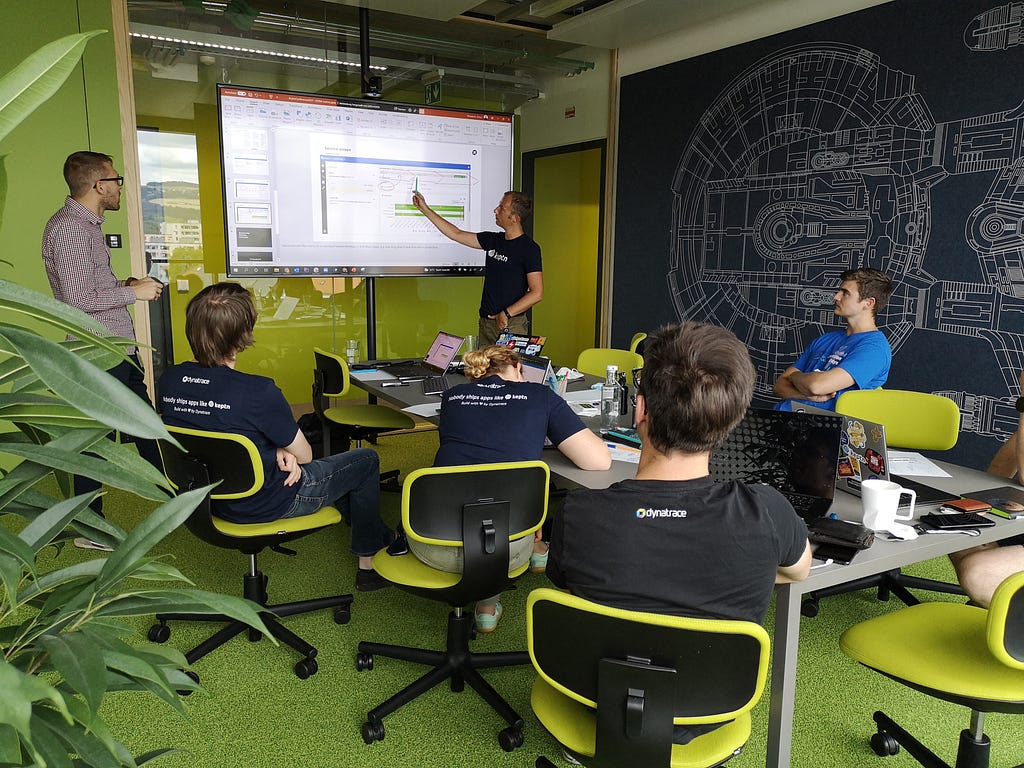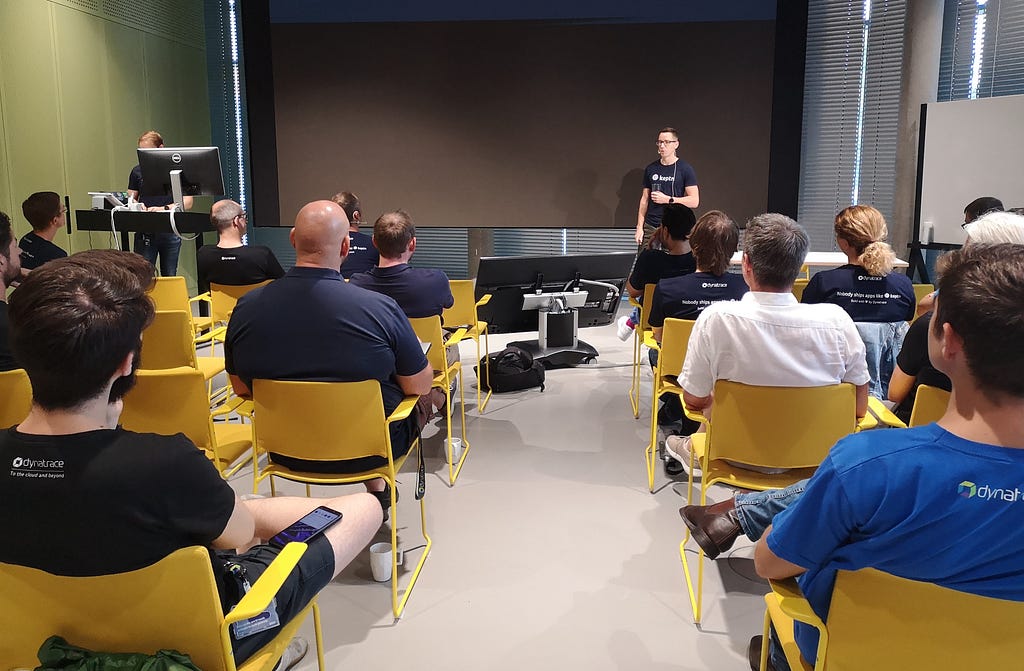Why your next tech conference should be company-internal
Innovation needs space, and a change of scenery helps with that

At Dynatrace, I’m part of the “Innovation Lab” team, which investigates new markets and ways to pivot our products to stay ahead of the curve in technology. As an Agile Program Manager, my responsibilities and daily tasks are very varied, and it’s hard to pinpoint what I do. However, recently I was tasked with organizing an internal conference for one of our projects: Keptn. Keptn is an open-source project part of the Cloud Native Computing Foundation, and many maintainers and contributors are working at Dynatrace. Since we have also adopted Keptn within the Dynatrace platform, we have many employees interested in developing and contributing to the open-source project.
Over two days, we held some presentations of success stories of Keptn’s implementation internally and externally. We planned some workshops to develop and discuss specific new features of Keptn. All in all, I can say that it was a successful event, so I wanted to share what I learned about why it makes sense to create conferences within a company. If you want to learn more about the logistics of organizing an internal conference, I wrote a separate blog post, which you can find here.
The benefits of conferences are varied, but some of the main reasons people attend them are networking and exchanging ideas. It may seem counterproductive to hold a similar event internally. Still, when you work in a large company, it makes sense to gather everybody to collaborate every once in a while.
Getting everybody in the same place
The whole “situation” we’ve had this past year and a half has brought us to rethink the way we work and how our teams are spread across the globe. Working from home has a lot of benefits and disadvantages. But the fact is that at Dynatrace, we have teams working on the same project that, no matter what would be far apart from each other. Take the Keptn project, for example. We have a core team working in Klagenfurt, we have some people working in Graz (find out what they’re doing), and others in Linz and Barcelona. Austria may be a small country, but we find ourselves hundreds of kilometers apart, even if when in the office.
It’s just a good idea to create a project-related event where people can meet, exchange information (more on that in the next point), and discuss new features and improvements on the project. It also helps with the networking side, as you get to know those you are working with, creating a different type of team bonding.
Finally, it can help people find that sense of ownership that makes them want to do more than their 9-to-5 or pushes them beyond just satisfying their basic job descriptions. Some may see 35 people not working on their daily tasks as a massive waste of resources, this may be true in the short run, but in the long run, you are strengthening your company culture and giving value to the people that make up the company.
Getting an overview of the project members
Sometimes it is easy to not see beyond your contributions to a project, and you might be working for a year on something and never learn who else is working on what topic in your exact project. Then you go to a conference based on your project, and wham! You meet new people you didn’t even know you were collaborating with.
Sometimes we need to leave our little bubble to get the big picture and talk to others working on the same project. Maybe you’ll find out that they face the same issues, or perhaps they will be able to help you with something you are doing. Or who knows, they could even become contact persons for future endeavors.

Exchange of information between teams working on different things
On the second day of our two-day conference, one of the attendants from the support team remarked how great it was to have the possibility to learn how the integrations with Keptn work. Due to the geographical distances, it makes sense from a project perspective to have teams dedicated to different aspects of a project sitting in the same office. However, this also leads to a dangerous silo effect. Exchanging information over Zoom is not the same as working or brainstorming together with somebody from another team in a real-life workshop.
Think about it, how often does it happen that you are on a zoom call and you get another 10, 15, or 20 notifications… no matter the will, you are going to get a little distracted. But when you put people in a room (and load them with coffee), great ideas come out. You are reading their body language. You are mixing thoughts easily, without lag, audio failures, or other technical issues.
Pivoting your priorities/roadmap
The great feeling you have when you think you’ve already set the priorities and the roadmap for the next weeks and months often doesn’t last. When you gather many brains and set them free to discuss the product, you inevitably discover new features, and you end up changing priorities. But that’s a good thing! You want to stay agile and ahead of the curve, and discussing during in-person workshops is the way to go!
The only issue is that you need to be ready to pivot and change your priorities if any idea comes up that is better or gives you a more significant ROI than what you already have.
Innovation needs space
To no fault of our own, we tend to focus on the short-term tasks in front of us in our daily business. But if you want new ideas and want to stay innovative, you need to give people the time and space to do it. Sometimes, a change of scenery or a different sparring partner helps bring out brand new “lightbulb moments” and create a new network that was not there before.
Times may be weird, complicated, and sometimes frightening. Working from home or remotely is a great option, but it isn’t the real thing, and people need other people to drive change, discover and innovate truly.
Ready to plan your internal conference? Then check out my five tips on my other blog post: 5 tips to a successful company-internal conference
Why your next tech conference should be company-internal was originally published in Dynatrace Engineering on Medium, where people are continuing the conversation by highlighting and responding to this story.
